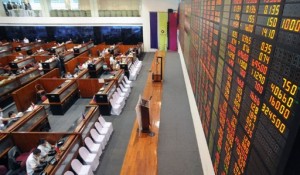Some of the price increases that have pushed the country’s inflation rate to its highest in nearly a decade can be attributed to the weak peso which has been on a downtrend since the start of the year, according to a ranking central bank official.
As such, Bangko Sentral ng Pilipinas Deputy Governor Diwa Guinigundo said that an interest rate hike—which market watchers expect to be announced after next week’s Monetary Board meeting—might help cap the inflation rate by stabilizing the local currency.
“The economy is robust enough to accommodate a rate hike,” he said, on the sidelines of a press briefing by the Duterte administration’s economic managers yesterday.
Guinigundo explained that any rate hike that might be ordered by monetary authorities would serve a threefold purpose of buttressing the peso against the US dollar, capping the inflation rate and improving the credibility of the central bank vis-a-vis its mandate of keeping prices stable.
The BSP’s deputy chief pointed out that, as a rule of thumb, every 1 percent decline in the value of the peso against the dollar results in an increase in the national inflation rate by 0.06 percent.
“The exchange rate has declined 8 percent year-to-date,” Guinigundo said. “So that will be around 0.48 percent [of the latest inflation rate of 6.4 percent].”
This supports the assertion of Finance Secretary Carlos Dominguez III that the high inflation rate is partly due to external factors, he explained.
“When the US Fed starts jacking up interest rates, that causes capital to move out, and the peso starts depreciating,” Guinigundo added.
He noted, however, that the economy remained attractive to investors as evidenced by the steady inflows of short-term portfolio investments, as well as long-term foreign direct investments
“With respect to foreign portfolio investments, we have to emphasize that from the beginning of the year to today, we see a $600-million net inflow,” he said.
“And in the case of FDIs, that’s about $5.8 billion net FDIs representing 42 percent over the previous year’s amount of $4 billion.”
Guinigundo said authorities still believed the inflation rate would peak within the third quarter of 2018— leaving the possibility that the rate would still rise for the current month—while nonmonetary measures being implemented by the government would kick in by the fourth quarter to cap the increase in consumer prices.
“We also expect that for the rest of the year, [dollars from] overseas remittances and business process outsourcing [firms] will be coming in in a bigger way,” he said. “This is the holiday season and the exchange rate will start shaping up.”


